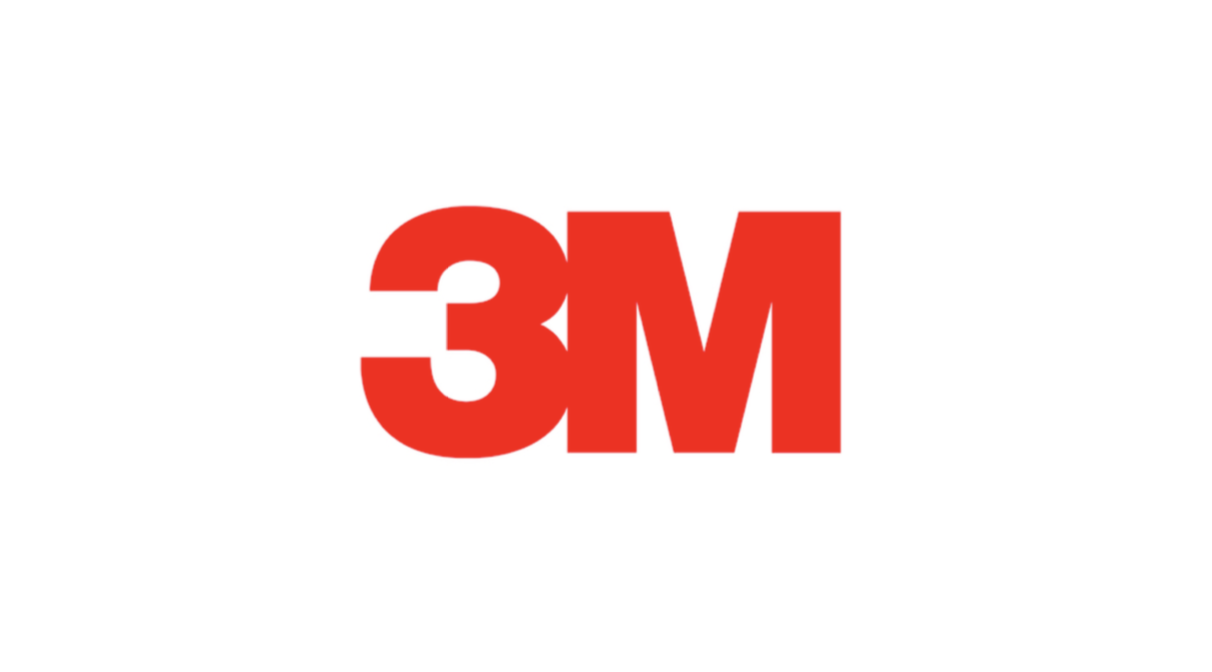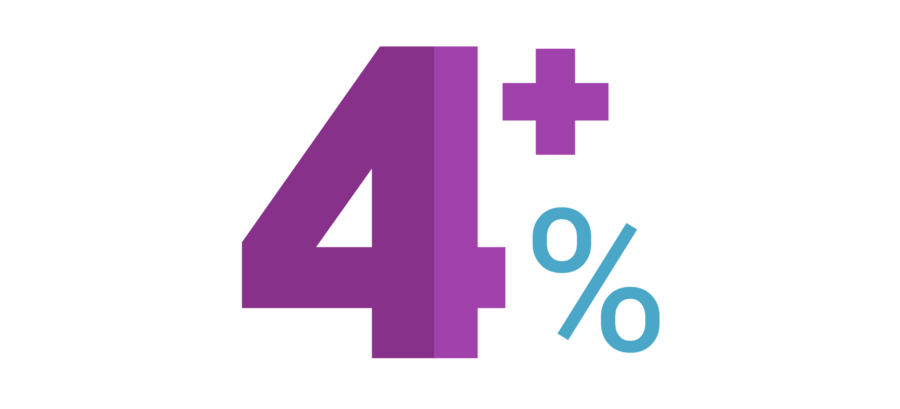
3M Expects to Return to Profitable Growth in 2021
Macro headwinds, slow-moving restructuring plans, and mounting legal liabilities have weighed on 3M's performance since CEO Michael Roman took the top job in July 2018.
On Tuesday, the industrial conglomerate reported earnings which gave investors more confidence in 3M's plan to return to profitable growth following sales and earnings declines the last two years.
Organic sales grew 6% in the fourth quarter, margins expanded, and free cash flow increased 16%.
3M's Safety & Industrial segment (34% of sales) reported 13% revenue growth thanks to strong pandemic-related demand for its respirator masks and air filters, but other parts of the business improved as well.
Transportation & Electronics (25%) returned to growth after a challenging last two years, and Health Care (25%) delivered a 7% sales increase despite a decline in elective procedure volumes. Consumer (16%) revenue jumped 10% thanks to higher home improvement spending, too.
After recording 2% organic sales declines in 2019 and 2020, management expects to deliver organic growth of 3% to 6% this year with improved earnings, margin expansion, and strong cash flow.
3M also begins the year with a stronger balance sheet. Despite sluggish growth in 2020, the company's solid cash flow generation allowed it to improve its net debt position by $4.1 billion, or 23%.
As a result, 3M exited the year with a net debt to EBITDA leverage ratio of 1.5x, down from 2.3x at the end of 2019 (as measured by the company).
This provides the firm with more financial flexibility to consider opportunistic acquisitions and increases 3M's margin of safety as it works through legal liabilities related to the firm's so-called PFAS chemicals (see our note here for background information).
PFAS litigation could remain an overhang on the stock, especially as President Biden looks to further crack down on these chemicals. But based on what we know today, we still don't expect this risk to threaten 3M's dividend or long-term outlook.
3M over the last three years recorded litigation-related charges totaling about $1.7 billion. That figure seems likely to rise as more PFAS trials take place, and some analysts believe 3M's liability could ultimately exceed $10 billion.
We estimate 3M's leverage ratio would jump by about 1.1x if it took on $10 billion of debt. In other words, the company's capital structure would remain healthy, suggesting it has the financial flexibility to handle such a shock without imperiling the dividend.
It's also worth noting that remediation costs would likely be paid out over the course of years or even decades due to drawn out court cases and the multiyear nature of most environmental cleanup work, lessening the annual hit to cash flow. (3M retained $3.3 billion of free cash flow after paying dividends in 2020.)
Looking ahead, management expects to increase investments in growth, productivity, and sustainability in 2021, including a 20% to 40% jump in capital expenditures.
One third of the company's sales come from products invented within the past five years, and this spending should help that trend continue as 3M focuses on opportunities across personal safety, home improvement, and health care products.
With global economic activity rebounding and 3M remaining in solid financial shape, we expect the firm to announce its 63rd consecutive annual dividend increase in early February.
Management's guidance calls for adjusted EPS growth of 5% to 11% this year, and 3M has the financial strength to raise its dividend in line with earnings.
However, management may opt for a more conservative increase (perhaps 3% to 5%) if they want to continue working down 3M's payout ratio from 67% last year to the company's historical norm near 50%.
Regardless of this year's upcoming dividend raise, we've held shares of 3M in our Top 20 Dividend Stocks portfolio since July 2015 and plan to stay the course.
Given the pervasiveness of many of the firm's 60,000 products across so many different end markets, we believe 3M's diversified business will likely at least track global GDP growth over time to become a more valuable company.
On Tuesday, the industrial conglomerate reported earnings which gave investors more confidence in 3M's plan to return to profitable growth following sales and earnings declines the last two years.
Organic sales grew 6% in the fourth quarter, margins expanded, and free cash flow increased 16%.
3M's Safety & Industrial segment (34% of sales) reported 13% revenue growth thanks to strong pandemic-related demand for its respirator masks and air filters, but other parts of the business improved as well.
Transportation & Electronics (25%) returned to growth after a challenging last two years, and Health Care (25%) delivered a 7% sales increase despite a decline in elective procedure volumes. Consumer (16%) revenue jumped 10% thanks to higher home improvement spending, too.
After recording 2% organic sales declines in 2019 and 2020, management expects to deliver organic growth of 3% to 6% this year with improved earnings, margin expansion, and strong cash flow.
3M also begins the year with a stronger balance sheet. Despite sluggish growth in 2020, the company's solid cash flow generation allowed it to improve its net debt position by $4.1 billion, or 23%.
As a result, 3M exited the year with a net debt to EBITDA leverage ratio of 1.5x, down from 2.3x at the end of 2019 (as measured by the company).
This provides the firm with more financial flexibility to consider opportunistic acquisitions and increases 3M's margin of safety as it works through legal liabilities related to the firm's so-called PFAS chemicals (see our note here for background information).
PFAS litigation could remain an overhang on the stock, especially as President Biden looks to further crack down on these chemicals. But based on what we know today, we still don't expect this risk to threaten 3M's dividend or long-term outlook.
3M over the last three years recorded litigation-related charges totaling about $1.7 billion. That figure seems likely to rise as more PFAS trials take place, and some analysts believe 3M's liability could ultimately exceed $10 billion.
We estimate 3M's leverage ratio would jump by about 1.1x if it took on $10 billion of debt. In other words, the company's capital structure would remain healthy, suggesting it has the financial flexibility to handle such a shock without imperiling the dividend.
It's also worth noting that remediation costs would likely be paid out over the course of years or even decades due to drawn out court cases and the multiyear nature of most environmental cleanup work, lessening the annual hit to cash flow. (3M retained $3.3 billion of free cash flow after paying dividends in 2020.)
Looking ahead, management expects to increase investments in growth, productivity, and sustainability in 2021, including a 20% to 40% jump in capital expenditures.
One third of the company's sales come from products invented within the past five years, and this spending should help that trend continue as 3M focuses on opportunities across personal safety, home improvement, and health care products.
With global economic activity rebounding and 3M remaining in solid financial shape, we expect the firm to announce its 63rd consecutive annual dividend increase in early February.
Management's guidance calls for adjusted EPS growth of 5% to 11% this year, and 3M has the financial strength to raise its dividend in line with earnings.
However, management may opt for a more conservative increase (perhaps 3% to 5%) if they want to continue working down 3M's payout ratio from 67% last year to the company's historical norm near 50%.
Regardless of this year's upcoming dividend raise, we've held shares of 3M in our Top 20 Dividend Stocks portfolio since July 2015 and plan to stay the course.
Given the pervasiveness of many of the firm's 60,000 products across so many different end markets, we believe 3M's diversified business will likely at least track global GDP growth over time to become a more valuable company.



